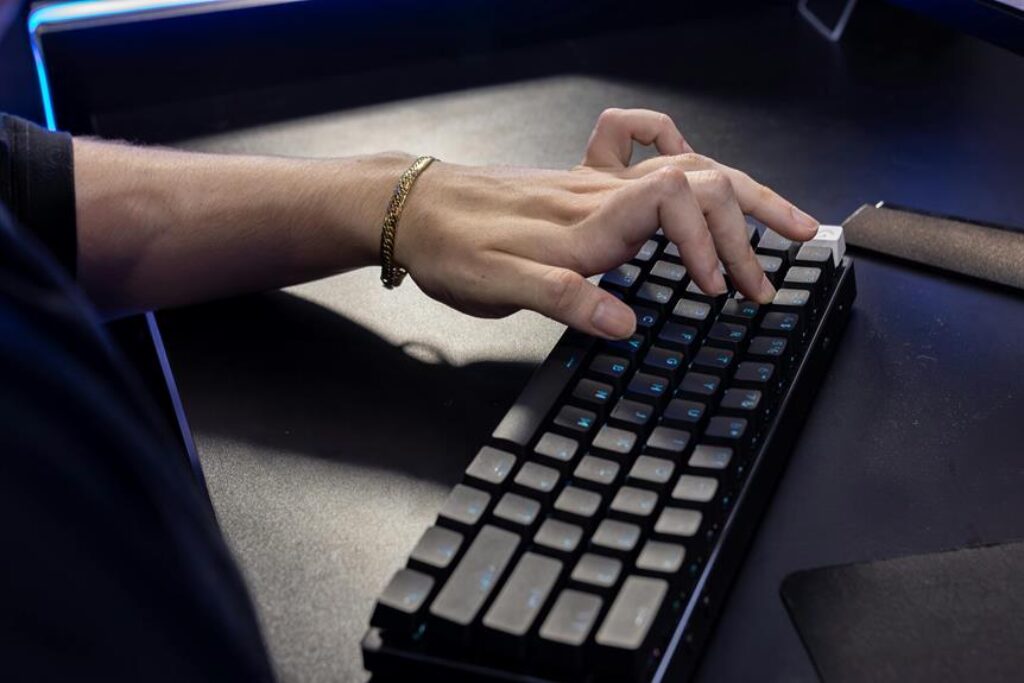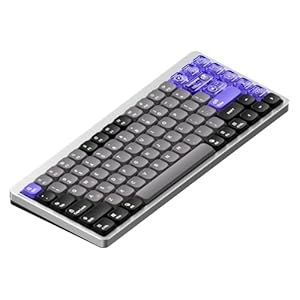
When considering the variations between gaming and office keyboards, you’ll find that each serves a distinct purpose in enhancing your computing experience. From design aesthetics to the performance-driven switch types, the differences are not merely superficial. Delving into the realm of backlighting options and customization features can provide you with a newfound appreciation for the unique capabilities these keyboards offer. But it’s the ergonomic considerations and comfort features that truly set them apart in catering to your specific needs. As you ponder the key disparities between gaming and office keyboards, you might uncover a world of possibilities that could significantly impact your daily interactions with your trusty keyboard.
Keyboard Design Variances
When choosing between gaming and office keyboards, you’ll notice distinct differences in their design features. Gaming keyboards often have a more aggressive and eye-catching aesthetic, with colorful backlighting, customizable RGB lighting, and angular shapes. These keyboards are designed to enhance the gaming experience and create an immersive atmosphere.
On the other hand, office keyboards tend to have a more professional and understated look, with simple and sleek designs that blend well in a professional setting. The focus of office keyboards is usually on comfort and functionality for long hours of typing, rather than on flashy features.
In terms of construction, gaming keyboards are typically built to withstand intense usage and have a more robust build quality. They may include additional features like wrist rests, dedicated macro keys, and media control buttons to enhance the gaming experience further.
Office keyboards, on the other hand, prioritize a comfortable typing experience with ergonomic designs, quieter switches, and sometimes even spill-resistant features to protect against accidents in the workplace.
Switch Types and Performance
Gaming and office keyboards vary not only in design but also in the type of switches they use, impacting the overall performance of the keyboard. Gaming keyboards often feature mechanical switches known for their tactile feedback and durability. These switches require a full press to register a keystroke, which can enhance typing accuracy and gaming responsiveness. In contrast, office keyboards typically use membrane switches that register a keystroke with a lighter touch. While membrane switches are quieter, they may not provide the same level of feedback as mechanical switches.
The choice between mechanical and membrane switches ultimately comes down to personal preference and usage. Gamers tend to prefer mechanical switches for their precise actuation and tactile feel, which can improve gaming performance. On the other hand, office workers may favor membrane switches for their quieter operation and softer touch, ideal for long typing sessions. Understanding the switch types and their impact on performance is essential when selecting the right keyboard for your needs.
Backlighting and Customization Options
For keyboard enthusiasts, exploring the backlighting and customization options can add a personalized touch to your typing experience. Backlighting on keyboards not only enhances the aesthetic appeal but also serves a functional purpose by improving visibility in dimly lit environments. Gaming keyboards often offer RGB backlighting with customizable color options, allowing you to match your setup or create dynamic lighting effects. On the other hand, office keyboards may have simpler white backlighting for practicality.
Customization options extend beyond just lighting. Gaming keyboards frequently come with software that enables you to remap keys, create macros for complex commands, and adjust the actuation force of keys to suit your preferences. These features can enhance your gaming performance by providing quick access to actions. Office keyboards, while less focused on gaming-specific customizations, may still offer programmable keys for productivity tasks.
Whether you prioritize a visually appealing setup or seek functionality tailored to your specific needs, the backlighting and customization options available in keyboards cater to a diverse range of user preferences.
Ergonomics and Comfort Features
Exploring ergonomic designs and comfort features can significantly impact your typing experience by reducing strain and enhancing overall productivity. When it comes to keyboards, ergonomic considerations are crucial for maintaining comfort during long typing sessions. Features such as wrist rests, adjustable stands, and split keyboard layouts can help prevent wrist strain and promote a more natural hand position.
Office keyboards often prioritize ergonomics over flashy features, focusing on providing a comfortable typing experience for extended periods. Look for keyboards with cushioned palm rests and adjustable tilt angles to customize the keyboard to your preferred typing position. Additionally, keyboards with a curved design or contoured key layout can help reduce wrist pronation and minimize the risk of repetitive strain injuries.
In contrast, gaming keyboards might place more emphasis on customizable lighting and key switches, but that doesn’t mean they lack ergonomic features. Many gaming keyboards offer detachable wrist rests, programmable macro keys for efficiency, and even keycap customization for a more tailored typing experience. Prioritizing comfort and ergonomics in your keyboard choice can make a significant difference in your overall typing comfort and productivity.
Trending Products














